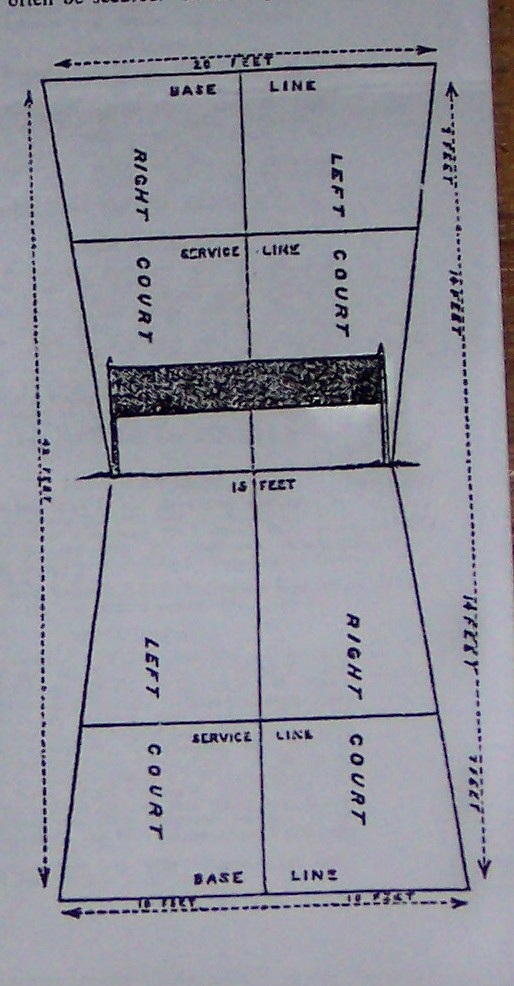
Origins of the Sport of Badminton
h: The Booklet of 1876
The February 1976 issue of the magazine World Badminton reproduced a short booklet, a photostat of which had been kindly sent to them by Mr David Galloway of Dublin.

The pages that follow this title page only refer to Badminton, but have very little in the way of actual rules. It is unfortunate that neither the booklet nor World Badminton identify the author or the publishers.
The heading of the booklet article is THE ANGLO-INDIAN GAME OF BADMINTON and contains amidst the early waffle the comment that "it has the advantage over Cricket, that it can be played by a much smaller number of persons, and by both sexes" a comparison that would probably not occur to modern commentators.
There is a diagram of the court, which shows it to be of the famous 'hour-glass' shape, but discrepancies between the dimensions on the diagram and those in the text shed doubt on the accuracy of both. It may be that whoever put this booklet together mixed Badminton up with Lawn Tennis, early versions of which certainly did use an hour-glass shaped court.
For example, the diagram shows the service line to be 14 feet from the net, with the back line 7 feet further back. The text on the other hand says 'the front lines five feet from the poles, the rear lines being nine feet further back'.
Advice is given that 'The shuttlecock should be struck gently...' which would make it hard to reach the service court.

This is a rare and fascinating document, but its internal contradictions make it somewhat disappointing as a contribution to finding out the actual history of Badminton.
World Badminton in its introduction to the booklet says: 'The first real "rules" of Badminton were published in 1877, one year later than this booklet, which must therefore be of historical interest to the annals of Badminton'
In fact the earliest known published rules are contained in the booklet by Major H.T. Forbes and published at Calcutta by the Great Eastern Hotel Company. This must date no later than mid 1873, as it was reproduced in full in The Field of October 11th 1873.